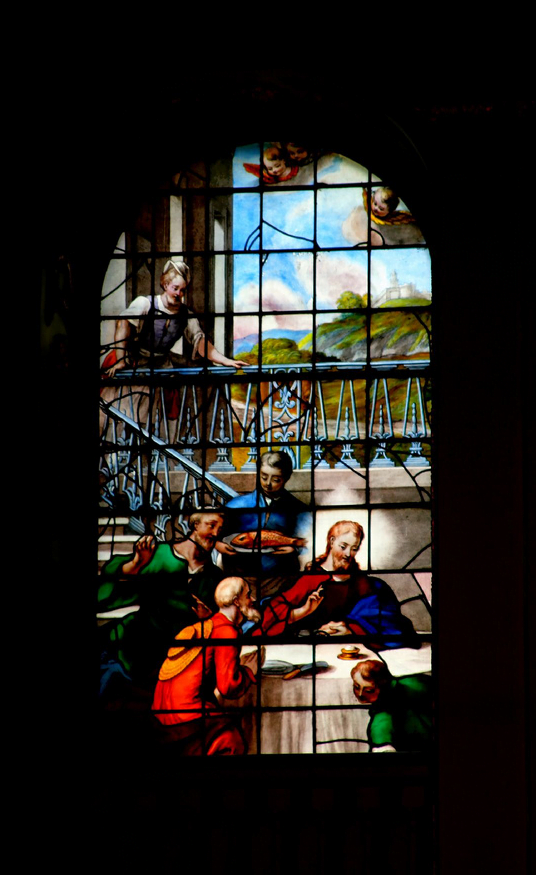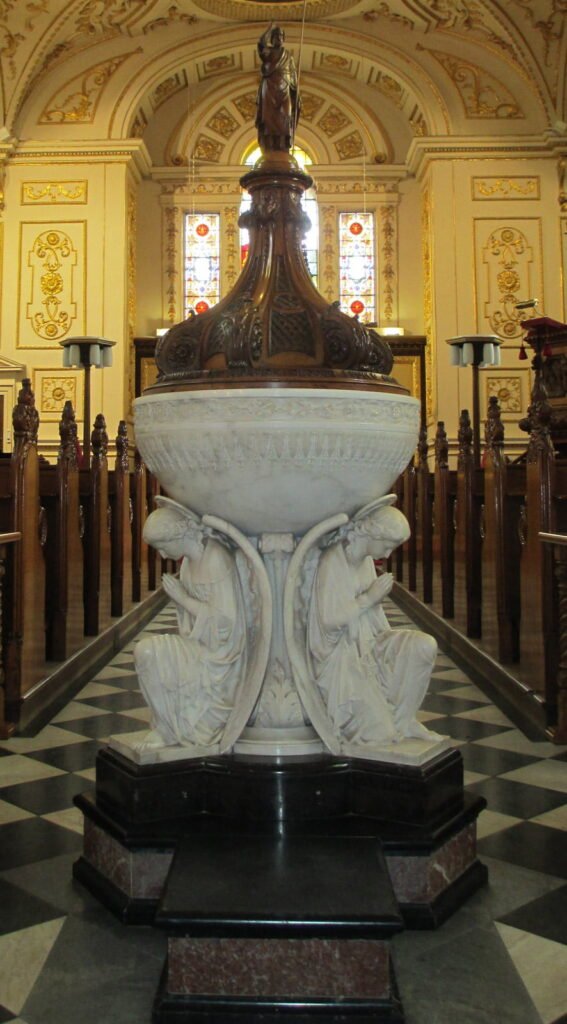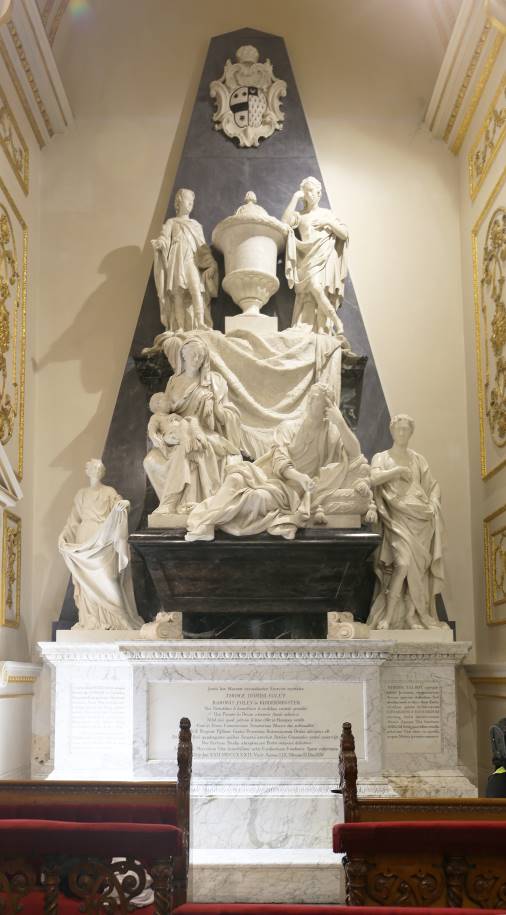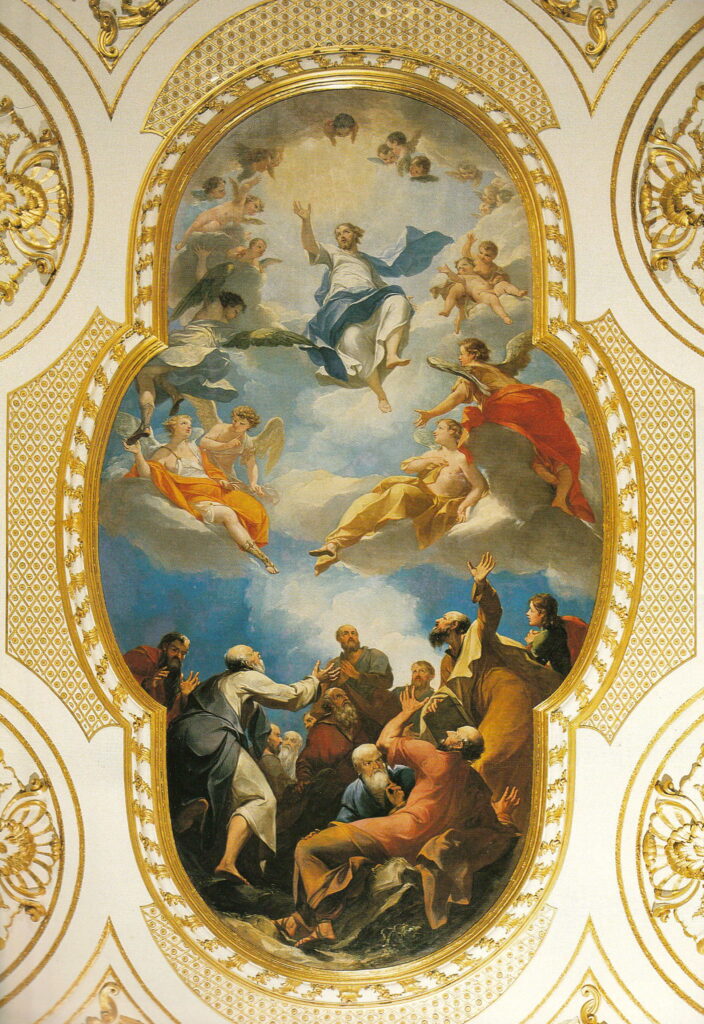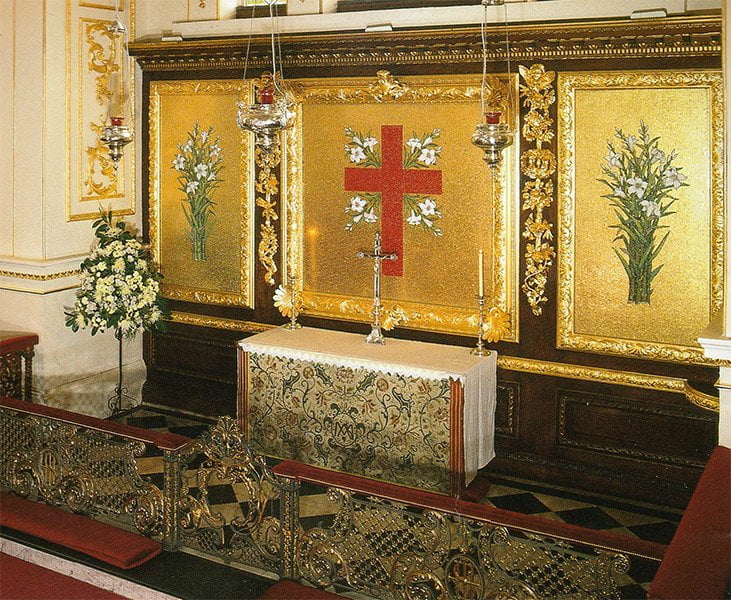Main Features of the Church
Windows
10 magnificent painted glass windows depict scenes from the Bible. Nine of these follow the life of Christ in a chronological sequence and the other is Moses Receiving the Ten Commandments. All were executed by Joshua Price in 1719 and 1721 from designs by an Italian artist, believed to be Francesco Sleter. Our windows are amongst the finest examples in Britain of combined stained glass and enamel painting.
The Font
The font is of white marble set on a black base. The basin is supported by three angels. The marble was carved by James Forsyth in 1861. The oak cover is surmounted by a carving of St John the Baptist.
Organ
The organ is regarded as one of the finest in the Worcester diocese, combining the best of the classical traditions with romantic tone colours. It is probable that some of the original pipes from Handel’s time were used in the restored organ. The organ case is the original from Cannons, near Edgware, Middlesex. The internal workings were enlarged and rebuilt for the Earl of Dudley around 1858-1860 by Nicholson & Co. of Worcester. The organ is frequently used for services, concerts, and recitals.
Foley Monument
The Foley Monument dates from 1737, and is one of the tallest funerary monuments in the country. The Monument was designed and carved by Michael Rysbrack, who was born in Antwerp in 1694. It depicts the first Lord Foley and his wife with five of their children who predeceased them.
Ceiling
The ceiling paintings are oil on canvas by the Italian artist Antonio Bellucci (1654 -1726). The three large ones depict the Descent from the Cross, The Ascension and The Nativity. Around the three main paintings are ten small paintings of groups of cherubs. In the lunettes above the windows are oval paintings of ten cherubs holding objects associated with the passion.
The Reredos
The mosaic panels were designed by Lady Rachel, second Countess of Dudley and made by Salviati in Venice in 1913. The wooden tresses between the panels are original and are in the style of Grinling Gibbons the 17th C wood carver. The altar frontal cloth is very fine embroidery from the early 18th century and was brought from Italy by Lady Dudley, as were the silver sanctuary lamps.
